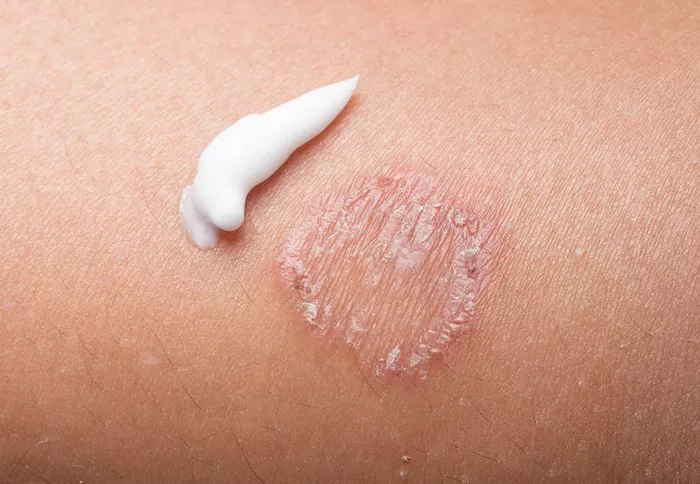Researchers at the University of Massachusetts Amherst have developed a groundbreaking, sprayable drug delivery system for treating psoriasis that could reduce costs and improve treatment outcomes. Their findings, published in Nature Communications, introduce a novel approach to delivering psoriasis medication directly to skin lesions using nanoparticles designed to bypass the immune system’s defenses.
Psoriasis, a chronic autoimmune disorder characterized by inflamed, scaly skin patches, affects approximately 125 million people worldwide, with 8 million in the United States alone. The condition is often associated with serious comorbidities, including psoriatic arthritis, heart disease, and mental health issues. In the U.S., the annual healthcare costs for treating psoriasis are estimated to exceed $135 billion.
Ashish Kulkarni, associate professor of chemical engineering at UMass Amherst and senior author of the study, explained that current psoriasis treatments are costly, can cause significant side effects, and are not effective for all patients. “Even with high expenses, up to 30 to 40% of patients do not achieve sustained relief,” he said.
To address these challenges, Kulkarni and his team focused on developing an affordable, easy-to-apply spray treatment. Previous research had shown that certain nanoparticles could worsen inflammation, making them unsuitable for psoriasis therapy. However, Kulkarni’s team found that lipid nanoparticles could inhibit the inflammatory pathways responsible for psoriasis, acting as a “Trojan horse.” These nanoparticles are designed to avoid detection by the immune system, allowing them to deliver medications directly to the affected cells.
The researchers also explored the shape of the nanoparticles, inspired by the ability of non-spherical pathogens to infect cells more efficiently. After testing various shapes—rods, ellipses, and spheres—they found that nanorods were particularly effective in delivering drugs. “Nanorods interact with cells in a unique way,” Kulkarni explained. “They are taken up by cells at much higher rates, allowing us to deliver drugs in higher concentrations.” In their tests, nanorods reduced inflammation 3.8 times more effectively than nanoellipses and 4.5 times more than nanospheres.
Encapsulated within the rod-shaped nanoparticles are two psoriasis drugs, which, when combined with the lipid nanorods, proved 59 times more effective at reducing inflammation than free drug administration. To enhance the delivery system’s ease of use, the team incorporated the nanorods into a polymer scaffold, which keeps them suspended in solution. When applied as a spray, the solution forms a gel, releasing the nanorods slowly into the skin cells.
In preclinical trials, the new treatment was tested on mice with psoriasis-like lesions. Mice treated with the spray saw significant reductions in inflammation. The severity of psoriasis in untreated mice averaged a score of 10.25, while those treated with nanorods saw their scores drop to 1.33, and mice treated with nanorods loaded with the psoriasis medication had scores as low as 0.66.
Kulkarni expressed optimism about the potential impact of the new treatment for people suffering from psoriasis. “This is a promising approach,” he said. “Our lab focuses on creating therapeutics with real-world applications. This platform is not only effective but also scalable and easy to use.” The next steps involve toxicity testing and long-term efficacy studies in larger animal models.
If successful, the new sprayable psoriasis treatment could offer a cost-effective, convenient, and more effective option for millions of patients worldwide.
Related topics:


























